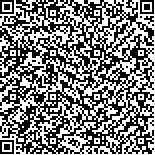| 摘要: |
| 采用生态学方法,以黑暗条件为对照,研究了白炽灯、日光灯、金卤灯作为照明光源及不同光照时间对凡纳滨对虾(Litopenaeus vannamei)游离虾青素含量及生长的影响。实验对虾初始湿体重为(2.108±0.036)g,实验持续50天。结果表明,不同光照对于对虾体内游离虾青素含量和生长均存在显著的影响。具昼夜节律金卤灯照明及日光灯恒照处理组对虾体内游离虾青素含量显著较高(P<0.05),对虾体内游离虾青素的含量平均为(3.31±0.20)mg/kg。对虾的特定生长率在具昼夜节律的金卤灯照明时最快(P<0.05),连续日光灯照明组生长最慢(P<0.05)。对虾的生长率与其体内游离虾青素含量呈显著的负相关性(P<0.05),说明对虾在体内积累虾青素的主要目的不是为了促进生长,可能是为了避免强光照对机体的伤害。本研究表明,在金卤灯照明的条件下,对虾具有较高的虾青素含量并且生长较快,因此金卤灯较其他灯具更适宜作为对虾室内养殖的光源。 |
| 关键词: 凡纳滨对虾 光源 光照时间 游离虾青素含量 生长 |
| DOI: |
| 分类号: |
| 基金项目:中国科学院知识创新工程重要方向项目“对虾高效健康养殖工程与关键技术”资助,ZKCX2211号;中国科学院海洋所知识创新工程领域前沿项目“对虾工程化养殖系统结构优化及重要营养元素收支”资助,L400223108号。 |
附件 |
|
| EFFECT OF DIFFERENT LIGHT SOURCE AND LIGHT APPLICATION TIME ON FREE ASTAXANTHIN CONCENTRATIONS AND GROWTH OF SHRIMP LITOPENAEUS VANNAMEI |
|
YOU Kui1,2, YANG Hong-Sheng1, LIU Ying1, LIU Shi-Lin1, MAO Yu-Ze1, YU Li-Dong1
|
|
1.Institute of Oceanology, Chinese Academy of Sciences, Qingdao, 266071;2.Graduate School, Chinese Academy of Sciences, Beijing, 100039
|
| Abstract: |
| The effect of different light sources (incandescent lamp, IL; fluorescent lamp, FL; metal halide lamp, MHL; Control no lamp) and light application time (daytime only, DT; day and night, DN) on the concentration of free astaxanthin and growth of shrimp Litopenaeus vannamei were measured in 50-day experiment under laboratory conditions. Each treatment, shaded from each other, was conducted in triplicate aquarium (containing 6 individuals each) inside well-ventilated separate wooden rooms. The experiment lasted from July 7 to August 25, 2003 in the Laboratory of Marine Ecology and Environmental Sciences, Institute of Oceanology, Chinese Academy of Sciences. Free concentration of astaxanthin (FAC) in shrimp was used as an indicator for shrimp body color. The growth of L. vannamei was measured by specific growth rates (SGR). Initial weights of the shrimp are (2.108±0.036) g (mean±SE). FAC are measured by HPLC against external standards. The results are as follows.
Mean FAC of the shrimp was (3.31±0.20) mg/kg similar to that of salmon and shrimp reported, but lower than the total carotenoid concentrations of shrimp measured by spectrophotometer. When shrimp in DN by FL and DT scheme by MHL, the FAC was significantly higher than the others (P<0.05), and there was no obvious difference among the others (P>0.05). FAC in wild shrimp was higher than that of other samples. So increasing light can improve shrimp body color. The SGR of shrimp is the highest in the group of DT by MHL (P<0.05), and the lowest in DN by FL (P<0.05). The former is about 1.5 times of the latter. No obvious difference among the others (P>0.05).
This result could be related to the character of different light sources. Commonly, FL spectrum contains ultraviolet and MHL’s have infrared ray. So infrared ray is favorable for shrimp growing but ultraviolet. Researches have shown that fish or shrimps would grow faster when astaxanthin was added to their diet than those with astaxanthin-free in the control.
SGR of shrimp was in significant negative correlation to their FAC (P<0.05), which is unexpected result. In other words, when the FAC increase, shrimp would not always grow. It is widely understood that shrimp are easily damaged by excess light, especially ultraviolet light, because of their transparent bodies. Purpose of accumulating astaxanthin in their body is not for fast growing but protects themselves from being harmed by intense light. Under MHL however, L. vannamei would have not only bright body color due to high FAC inside their body but also grow fast. In conclusion, MHL is an appropriate light source for shrimp indoor culture. |
| Key words: Litopenaeus vannamei, Light source, Light application time, Concentrations of free astaxanthin, Growth |
